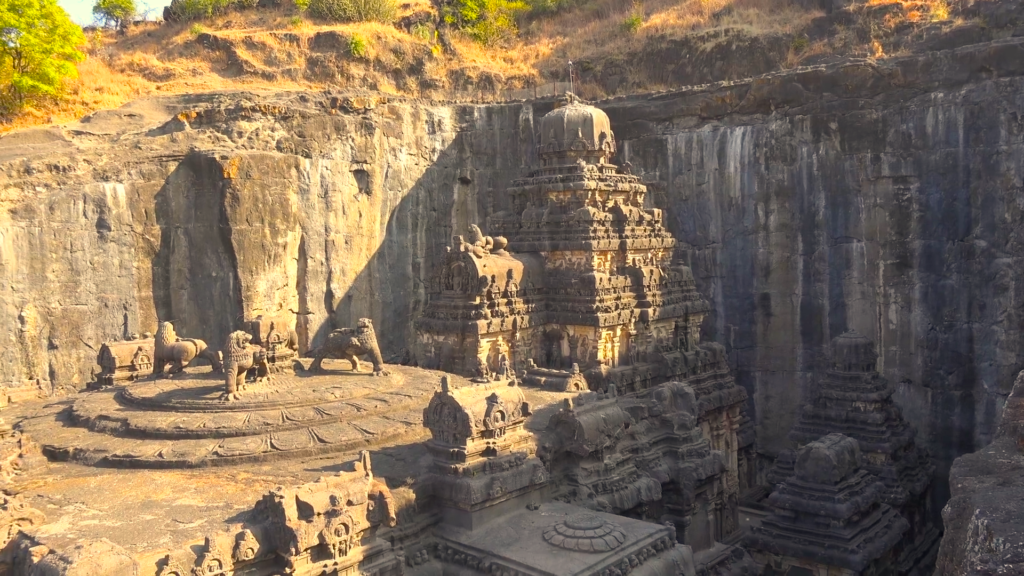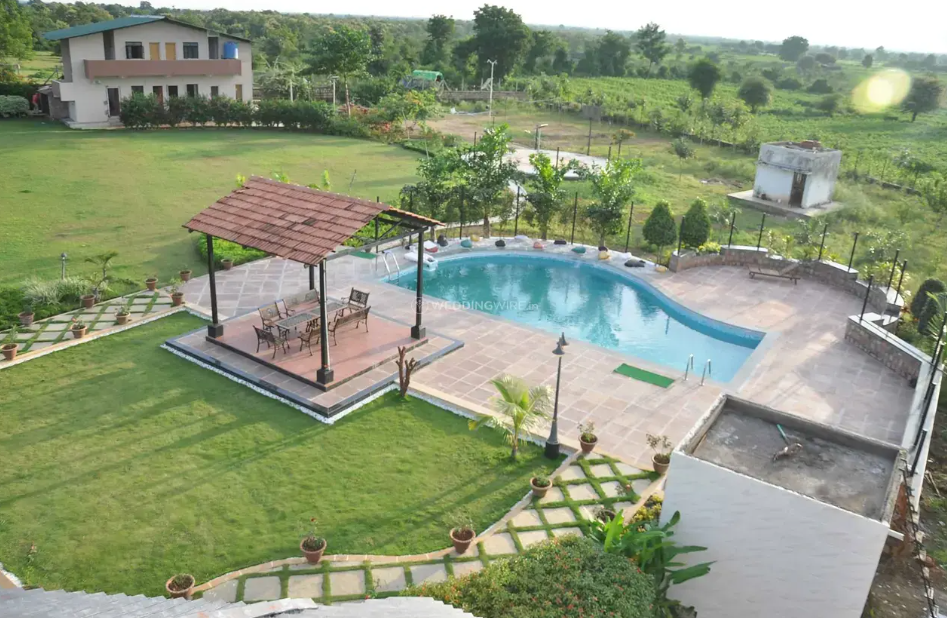Kailash Temple Ellora – The Unsolved Mystery of India’s Greatest Rock-Cut Marvel
Introduction
India is home to many architectural wonders, but few can match the grandeur of the Kailash Temple in Ellora. This temple is the world’s largest monolithic rock-cut structure, carved from a single massive rock. It is believed to have taken over 200 years to complete. Built during the reign of the Rashtrakuta dynasty, this temple is a symbol of India’s rich heritage and skilled craftsmanship. Let’s explore the mystery, history, and architectural brilliance of this incredible structure.

Who Built Kailash Temple?
The Kailash Temple was commissioned by Rashtrakuta King Krishna I between 757 and 772 CE. The temple was originally named “Krishneshwara” after the king, but over time, it became famous as the Kailash Temple, resembling Lord Shiva’s heavenly abode, Mount Kailash. Some historians believe that multiple generations of kings contributed to its construction. However, there is no clear evidence to prove this theory.
The Mystery Behind the Construction
One of the biggest mysteries surrounding the Kailash Temple is how it was built. The temple is 300 feet long, 175 feet wide, and 100 feet high. It is carved from a single rock, making it a masterpiece of engineering. Historians believe that approximately 2 million cubic feet of rock was removed to carve the temple, but where the removed rock went remains unknown. Some researchers speculate that the rock was dumped in a nearby river, but no concrete evidence supports this claim.
The temple was carved from top to bottom, a technique that eliminated the need for scaffolding. Skilled artisans and sculptors worked simultaneously—some carving the temple while others detailed the artwork. This architectural brilliance still amazes engineers and historians today.
Architectural Features of Kailash Temple
The temple is a blend of Dravidian, Pallava, and Chalukya architectural styles. It features intricate carvings, grand pillars, and detailed sculptures of Hindu gods and goddesses. The temple complex includes several key structures:
Entrance Gate & Gopuram
The temple has a grand entrance with a two-story gateway (Gopuram) adorned with carvings of deities. The river goddesses Ganga, Yamuna, and Saraswati are also depicted, symbolizing purity, devotion, and knowledge.
Main Temple
The central temple houses a large Shivling and is surrounded by beautifully carved pillars and halls. The roof of the temple was once coated with white plaster to resemble Mount Kailash.
Elephant Carvings
At the temple’s base, life-sized elephants appear to carry the structure on their backs, representing strength and stability.
Ramayana & Mahabharata Panels

The temple walls depict scenes from the Ramayana and Mahabharata. One of the most famous carvings shows Ravana shaking Mount Kailash while Lord Shiva calmly presses it down with his toe, symbolizing the triumph of wisdom over ego.
Victory Pillars & Courtyard
The temple courtyard has two intricately carved elephants and victory pillars, symbolizing Rashtrakuta supremacy.
The Mythical Tale of Kailash Temple
According to legend, the temple was built by Queen Manikavati of the Alapura kingdom. Her husband suffered from an incurable disease, but after bathing in a sacred pond near Ellora, he was miraculously cured. The queen vowed to build a temple in honor of Lord Shiva and fasted until she could see the temple’s peak.
No architect was willing to accept the challenge of constructing a grand temple in such a short time, except for a local craftsman named Kokasa. He started carving the temple from top to bottom, ensuring that the queen could see the peak within a week. The temple was later named Manikeshwar in her honor, and the city of Elapura (modern-day Ellora) was established.
Why is Kailash Temple a Must-Visit?
Unmatched Architectural Wonder: The temple’s top-to-bottom construction method is unique in the world.
Historical Significance: It reflects the advanced engineering and artistic skills of ancient India.
Spiritual Experience: Dedicated to Lord Shiva, the temple offers a divine and peaceful atmosphere.
Mystery & Legends: The unanswered questions about its construction make it a fascinating place to explore.
Conclusion
The Kailash Temple at Ellora is not just a place of worship; it is a testimony to India’s glorious past. The mystery behind its construction, the precision of its carvings, and the grandeur of its design make it one of the most astonishing architectural wonders in the world. Whether you are a history enthusiast, an architecture lover, or a spiritual seeker, Kailash Temple is a must-visit destination that will leave you in awe.


